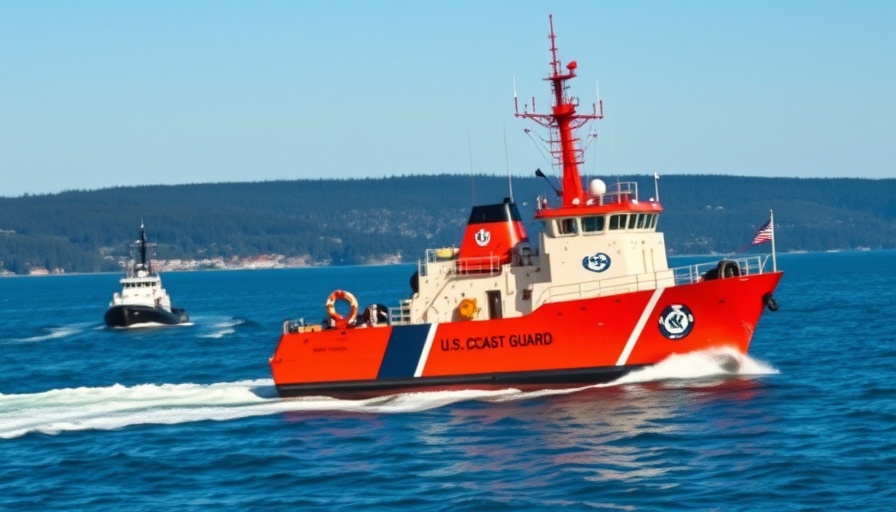
Setting Sail: U.S. Coast Guard Cutter Healy Embarks on Arctic Mission
On June 19, 2025, the U.S. Coast Guard Cutter Healy (WAGB 20) departed from Seattle, embarking on an important journey to the Arctic. This deployment is more than just another mission for the 420-foot icebreaker; it signifies a commitment to advancing scientific research in one of the world's most crucial and rapidly changing regions.
Two Missions, One Goal: Understanding the Arctic Environment
The Healy will conduct two main missions during its Arctic deployment. The first mission involves a collaboration with the Office of Naval Research (ONR) for the Arctic Mobile Observing System (AMOS). This innovative system is designed to heighten our understanding of sea ice movements and water circulation patterns. Technologies developed through AMOS will allow researchers to take a closer look at the dynamics affecting Arctic waters, paving the way for improved environmental monitoring.
In tandem with the ONR, the Healy has partnered with the U.S. National Science Foundation (NSF) for its second mission, aimed at collecting and deploying long-term subsurface mooring arrays to gather critical oceanographic data. The research will support the Nansen and Amundsen Basins Observational System (NABOS), thereby enhancing Arctic maritime knowledge crucial for future operations and environmental stewardship.
Leadership and Commitment: Capt. Kristen Serumgard Takes Command
Commanding the Healy is Capt. Kristen Serumgard, who emphasized the importance of their mission. “We are eager to return to the Arctic,” she stated, highlighting the role Healy plays in national security and environmental awareness. With her background in Coast Guard operations, her leadership is sure to enhance the mission's effectiveness.
The Critical Role of the Healy in National Security
Not only is the Cutter Healy designed for scientific missions, but it also plays a key role in supporting national security efforts. The Arctic region is becoming increasingly vital, not just for ecological reasons, but also for geopolitical interests. The knowledge gained from missions like those conducted by the Healy informs U.S. strategies regarding the evolving conditions in this strategic region.
The Broader Implications of Arctic Research
The research accomplished during this mission is crucial for understanding climate change impacts. As the Arctic warms, ice conditions change, influencing weather patterns globally. The Healy's work not only focuses on immediate scientific goals but also contributes to broader global climate initiatives and international discussions about Arctic governance.
Engaging Local Communities and Raising Awareness
The Healy's journey resonates beyond scientific boundaries, inviting local communities, especially residents from Seattle and other areas, to engage with the realities of Arctic research. Awareness about climate change and Arctic exploration can foster a sense of responsibility and urgency about environmental issues both locally and globally.
Conclusion: A Mission That Matters
This deployment underscores the critical role military, scientific, and environmental collaboration plays in safeguarding our world. As the U.S. Coast Guard Cutter Healy sets sail, it carries with it the hopes of enhancing our understanding of the Arctic's complexities. The journey serves as a reminder of our role in protecting the environment and ensuring our national interests as we navigate the challenges of a rapidly changing planet.
 Add Row
Add Row  Add
Add 




Write A Comment